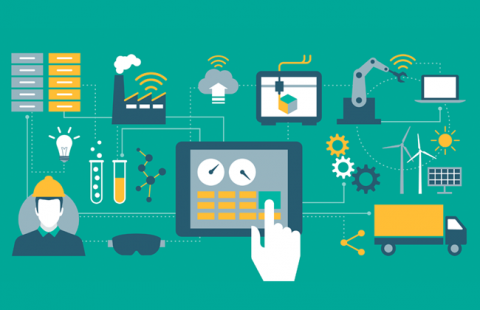Intelligent tools include more features based on artificial intelligence (AI) and machine learning (ML). These are the trends to monitor, along with the development of JavaScript-based testing tools, more API testing, and a greater emphasis on skills. This article will take you through 8 trends and techniques in test automation tools.
1. DevTestOps :
DevOps has been around for about a decade and has evolved into a critical automation mechanism that allows companies to rapidly and easily deploy improvements to a system in development. Continuous testing is now being fused with DevOps, giving birth to DevTestOps, to ensure consistency is maintained between all of these deployments. DevTestOps seeks to ensure that system updates are delivered to production without delay and without sacrificing consistency. According to a recent report, a low MTTR (Mean Time To Repair) in production correlates with higher customer satisfaction. To achieve a low MTTR(Mean Time To Repair)), all three of these categories must be improved: testing method, efficacy, and tooling. And this is where good DevTestOps can come in handy. As a result, one of the test automation trends is predicted to be DevTestOps.
2. AI-Ml and NLP-Based Automation:
AI-Ml is also an essential factor in the near future because most of the tools and processes that will revolutionise the test automation industry will use AI, ML, or some of its subfields like NLP to improve test automation speed, quality, and cost. Natural-language processing (NLP)-based automation tools tend to be acceptable to the QA community. Scriptless automation, model-based testing, the use of plain English statements to produce scripts, and a shallower learning curve that allow various project stakeholders to contribute to the automation effort are just a few of the advantages.
3. The use of intelligent testing tools will rise:
Increased use of AI and machine learning in research software to make test automation simpler is one of last year’s predictions that is now coming true. However, while expectations of AI and ML benefits in testing can bring quality assurance remain high, and adoption is on the increase. The explanation for this is that innovative technology can increase cost-efficiency, decrease the need for manual testing, minimise time to market, and aid in the creation and maintenance of continuous quality improvements, according to the study. Reduced test creation time, increased test coverage, increased resiliency of testing assets, and reduced test maintenance efforts are advantages of AI-based test automation. New machine learning techniques are also being used to assess the scale of optimal automation tests; the aim is to “reduce the exponential growth in test scripts,” according to the researchers.
4. Increase in use of JavaScript-based Testing Tools:
The rise of JavaScript-based testing tools like Jest, Cypress, Puppeteer, and Playwright will be among the most noticeable developments in 2021. This is since JavaScript is used extensively in front-end web creation. It’s also much easier to evaluate code written in JavaScript when it’s written in that language.
5. API research will continue to be in high demand:
Since APIs are used to share information between IoT devices, it’s essential to test the APIs of IoT-enabled devices to ensure they’re stable. When more of the world connects our devices to the internet, we now have smart thermostats, Alexa, smart light bulbs, TVs, and all else—it becomes increasingly necessary to test those devices. And we try them using APIs rather than browser-based methods.
6. Hyper Automation:
Hyper means “Hyperactive” or “exceptionally energetic,” and Hyper Automation means “active automation,” which isn’t far off from its purpose. Automation of end-to-end processes using RPA, AI, machine learning, natural language processing, and other similar technologies has gained traction in the industry for some time. Enterprises are eager to introduce hyper-automation across all of their processes because it allows them to minimise manual labour to a bare minimum and saves them a significant amount of time and money in the long run.
7. Distributed Cloud Automation:
Several commercial testing platforms provide cloud storage of automated test cases, making them a complete testing kit. The only issue that their users may encounter is the time delay in checking execution and seeing the results resulting from the cloud being hosted in a remote location. The cloud computing trend was expected to improve by being a distributed cloud. The information hosted on the cloud could be accessed from a nearby cloud rather than a fixed cloud location, increasing the speed and reliability of implementing the hosted test cases and obtaining the results.
8. Virtualisation And Containerisation:
Virtualization and Containerization will ensure speed, while shift left testing will ensure minimum bugs in the overall software development lifecycle. In today’s world, one of the most difficult aspects of automation testing is to test and quickly release applications while still keeping track of and protecting the environment. One of the biggest trends will be virtualization and containerization, which will allow you to isolate your code for testing. This technique would help simplify and identify problems more quickly, reducing chaos in the workplace.
Conclusion:
In light of the above developments, forecasts, and statistics, test automation has a brighter future. DevOps, containerization, continuous integration, and shift left testing will receive the most publicity. In contrast, big data, mobile, and API testing will provide exciting opportunities for QA businesses and test automation engineers. There will also be an increase in the number of codeless automation tools available, allowing testers to perform much more in the field of automation testing.













